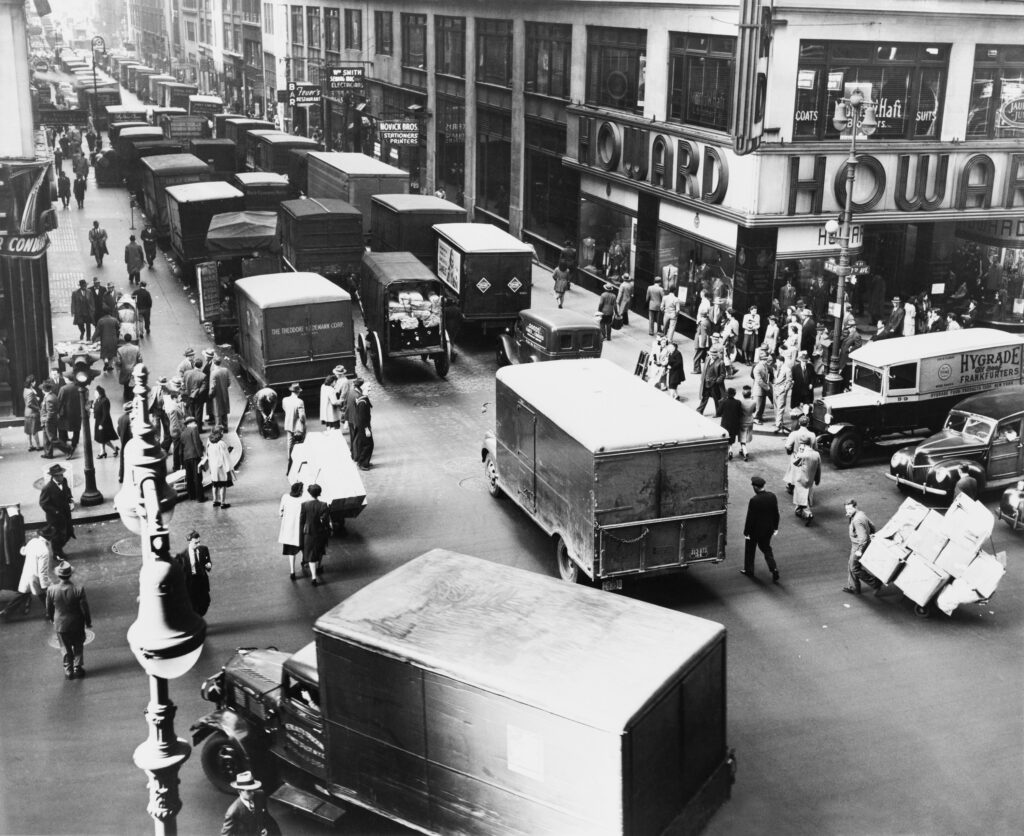A new paper quantifies the potential Freight Demand Management (FDM) market in metropolitan areas. The authors define FDM and describe the various initiatives that could be undertaken to reduce the externalities produced by freight traffic. These changes involve altering the demand patterns enacted by the receivers of supplies.
The term Freight Demand Management (FDM) is the area of transportation policy and planning that “seeks to induce the demand generator to enact changes in demand patterns to increase economic productivity and/or efficiency; and/or enhance sustainability, quality of life, and/or environmental justice.” FDM initiatives are unique because they focus on changing the behavior of the receivers of supplies, the economic agents that generate freight demand. Primarily, FDM seeks to reduce peak-hour freight traffic by changing the amount, timing (as in OHD), destination, or delivery mode.

The evidence suggests that FDM could reduce congestion and pollution and foster safety, quality of life, and livability by reducing freight traffic. Moreover, the experience in NYC and London indicates that FDM could be implemented in collaboration with the private sector, which is an important factor for implementation.
The literature on freight behavior research is reviewed to identify the industry segments most inclined to participate in FDM. Having identified the industry sectors of interest for FDM programs, the authors use freight trip generation models and publicly available data to quantify the freight trip generation for the industry sectors deemed to be the ideal target of FDM initiatives. These estimates are obtained for five large metropolitan statistical areas and a sample of representative medium to small metropolitan statistical areas of different sizes in the US. The paper concludes with a discussion of policy implications and chief results.
Regarding implementation priorities, the authors believe that public sector efforts should focus on implementing FDM programs on two different fronts. Focusing the initial efforts on LTGs—large buildings and commercial establishments—makes sense. LTGs generate an outsized proportion of the FTG and are frequently located in areas with chronic congestion and pollution. Reducing FTG at these locations will have a significant impact. Conducting the necessary outreach to the managers of LTGs is relatively easy as the number of potential contacts is relatively small. Convincing these real estate moguls to implement FDM at their properties could have a cascading effect on the entire market. These companies could reap major benefits if FDM is implemented, and their buildings would not need as many loading docks as they currently require. This would enable them to use premium ground floor space for more productive functions.
The public sector should also conduct outreach to trade groups, particularly those in the retail, accommodation, and food service sectors. Establishments in these sectors have a vested interest in improving livability in their shopping districts. More attractive shopping districts are bound to increase pedestrian traffic, shoppers, and ultimately profits. Engaging the trade groups representing these sectors is essential, as they could provide a trusted communication channel between the public and private sectors.
